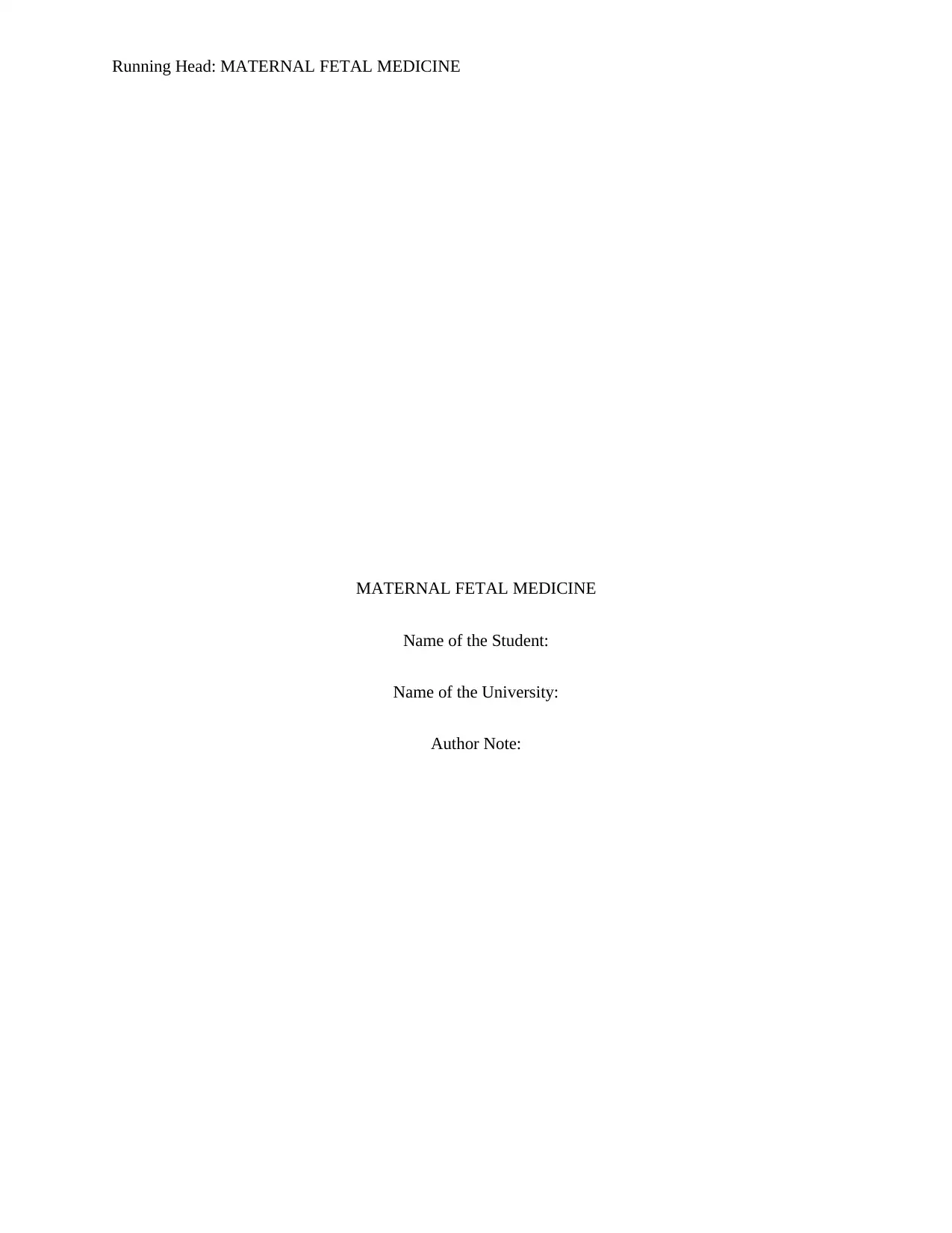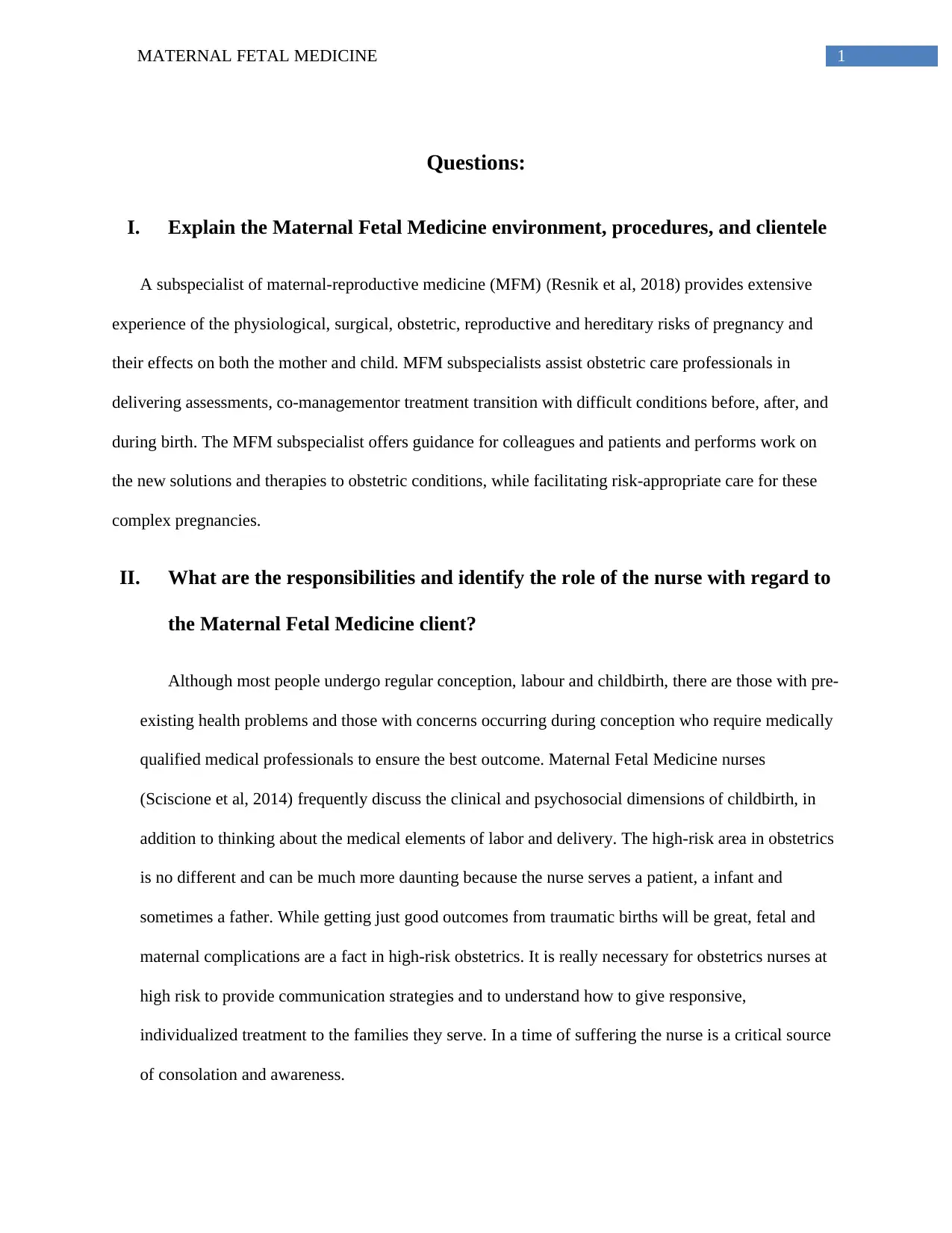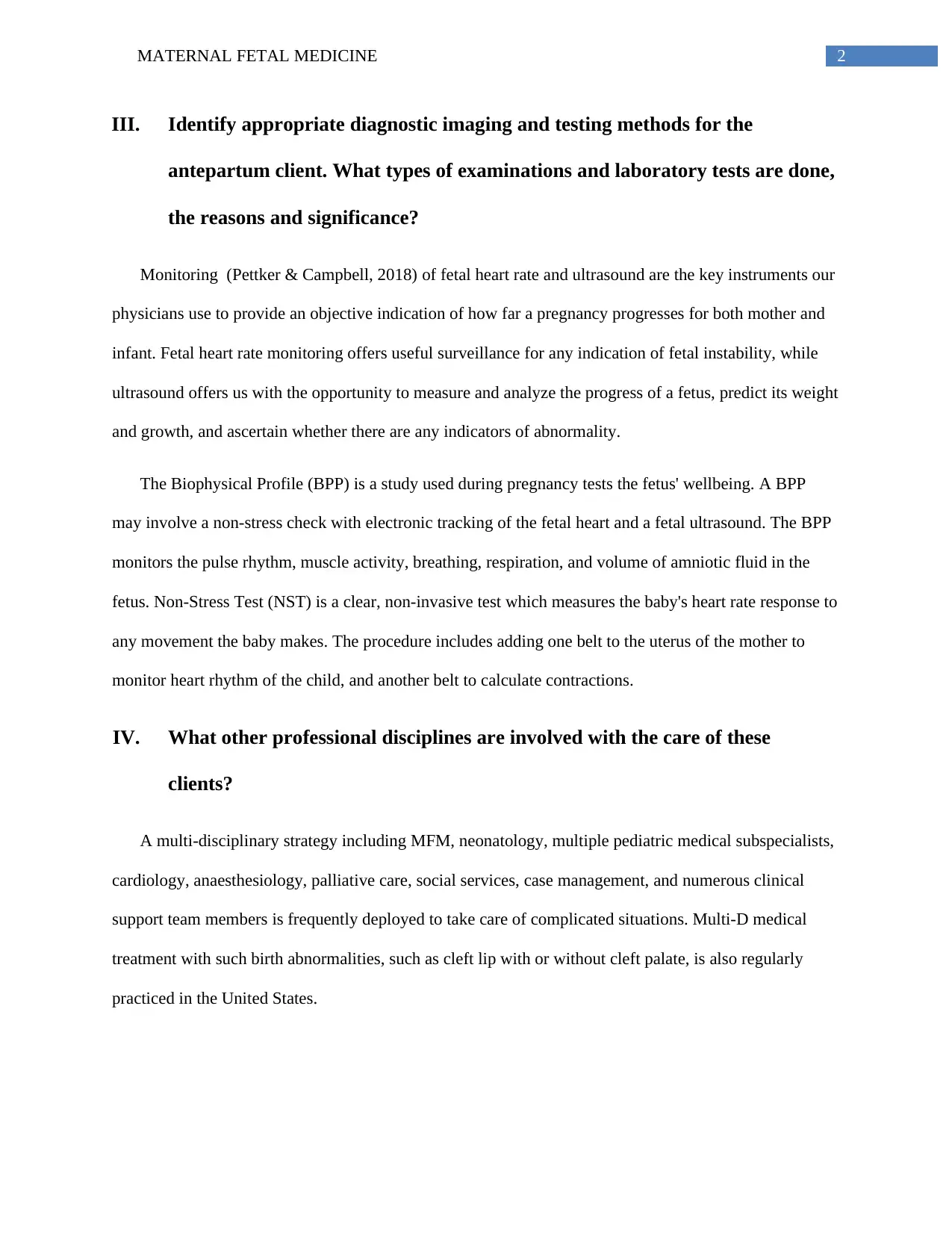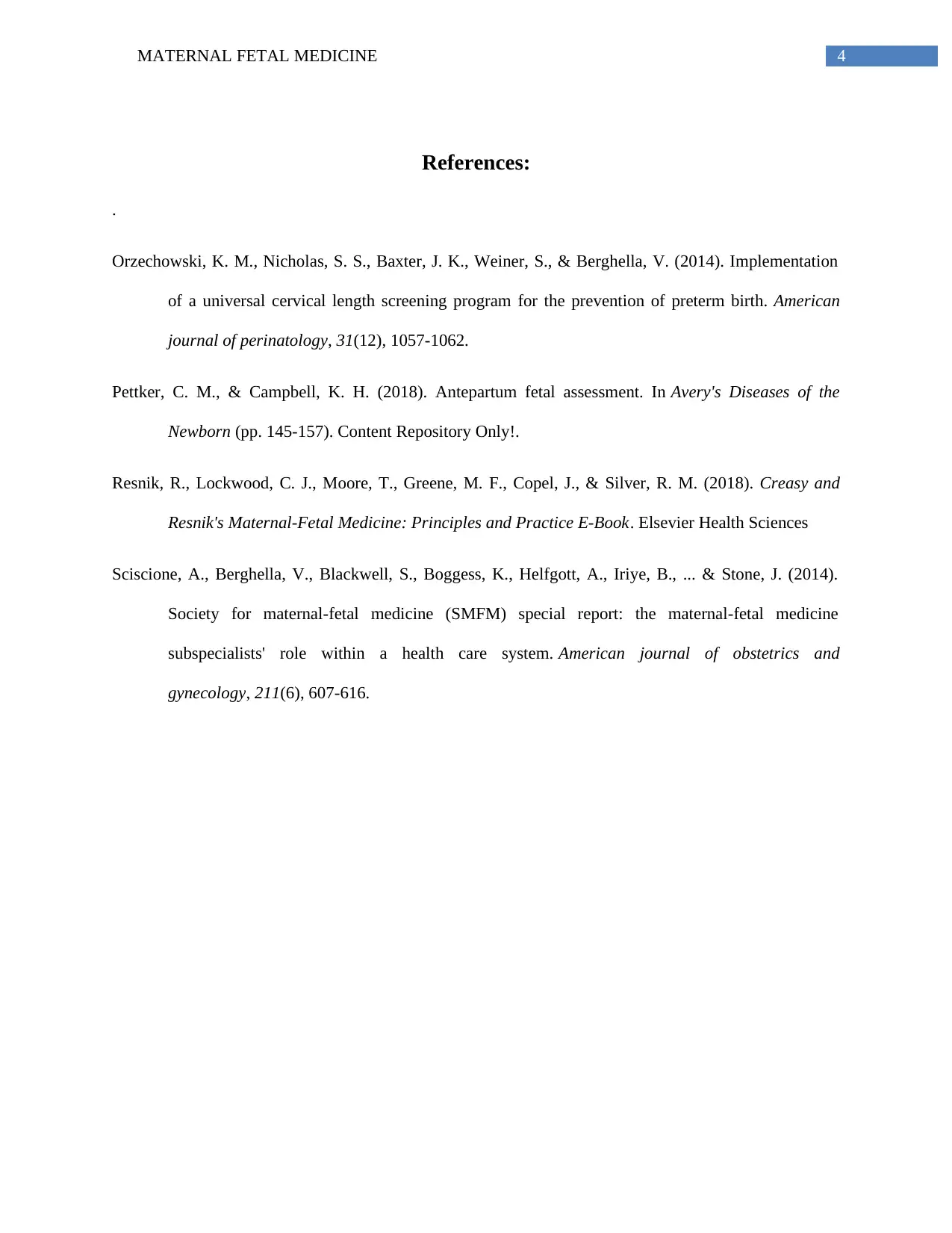Maternal Fetal Medicine: Client Care, Diagnostics, and Teaching
VerifiedAdded on 2022/08/25
|5
|880
|21
Homework Assignment
AI Summary
This assignment delves into the multifaceted world of Maternal Fetal Medicine (MFM), exploring its environment, procedures, and clientele. It outlines the crucial role of MFM subspecialists in managing high-risk pregnancies, providing guidance, and advancing obstetric care. The assignment details the responsibilities of nurses in this specialized field, emphasizing communication, individualized care, and emotional support for patients. It identifies key diagnostic imaging and testing methods, such as fetal heart rate monitoring, ultrasound, Biophysical Profiles, and Non-Stress Tests, explaining their purposes and significance. Furthermore, the assignment highlights the multidisciplinary approach to MFM care, involving neonatology, pediatric subspecialists, and other healthcare professionals. Finally, it addresses essential health teachings observed in MFM, emphasizing patient-centered care and the integration of scientific expertise, nursing skills, and ethical standards. The assignment underscores the importance of comprehensive care for both mother and fetus in complex obstetric situations. This assignment is a great resource for students, offering insights into the complexities of maternal-fetal medicine, including the roles of various healthcare professionals, diagnostic methods, and patient care strategies.
1 out of 5







![[object Object]](/_next/static/media/star-bottom.7253800d.svg)